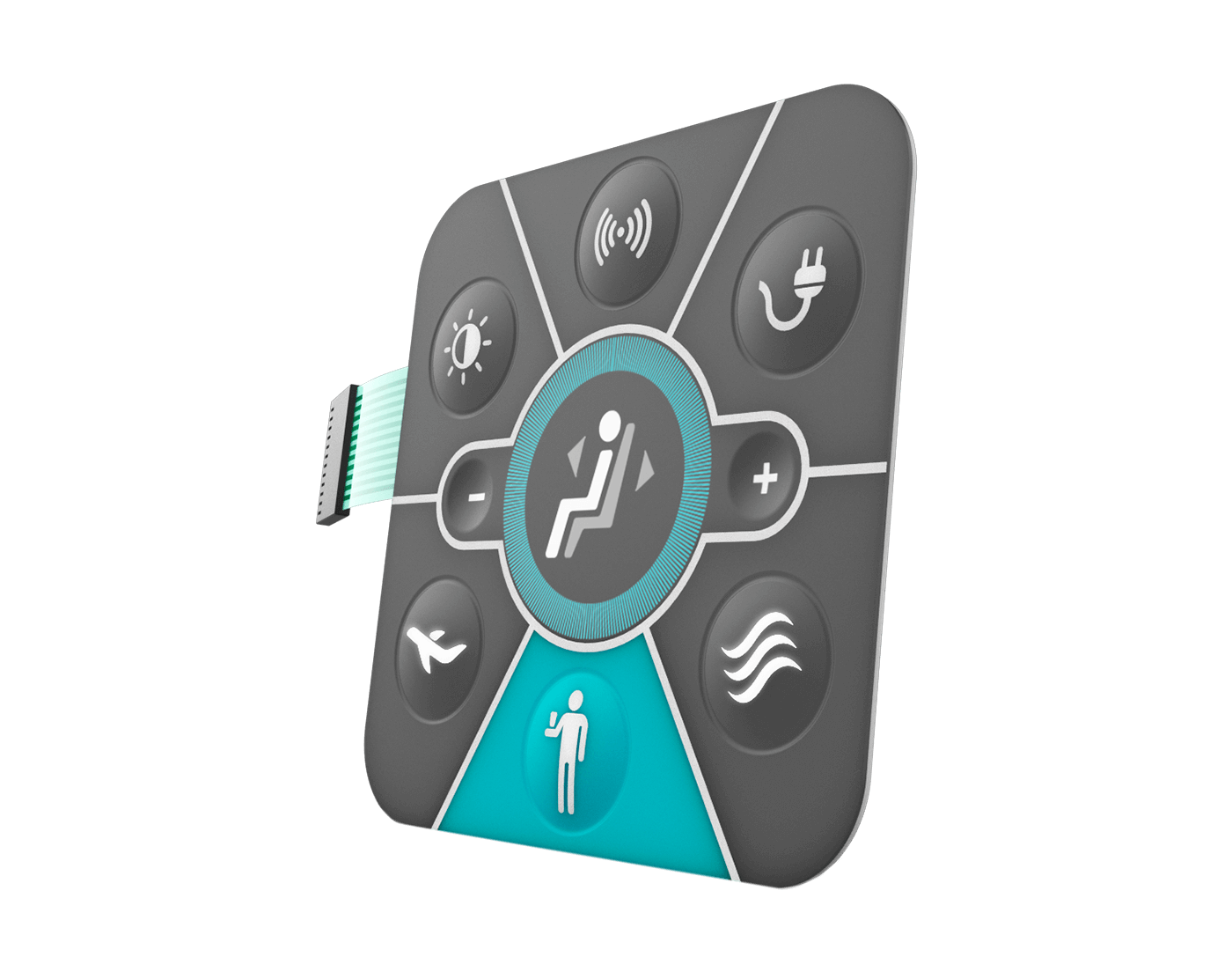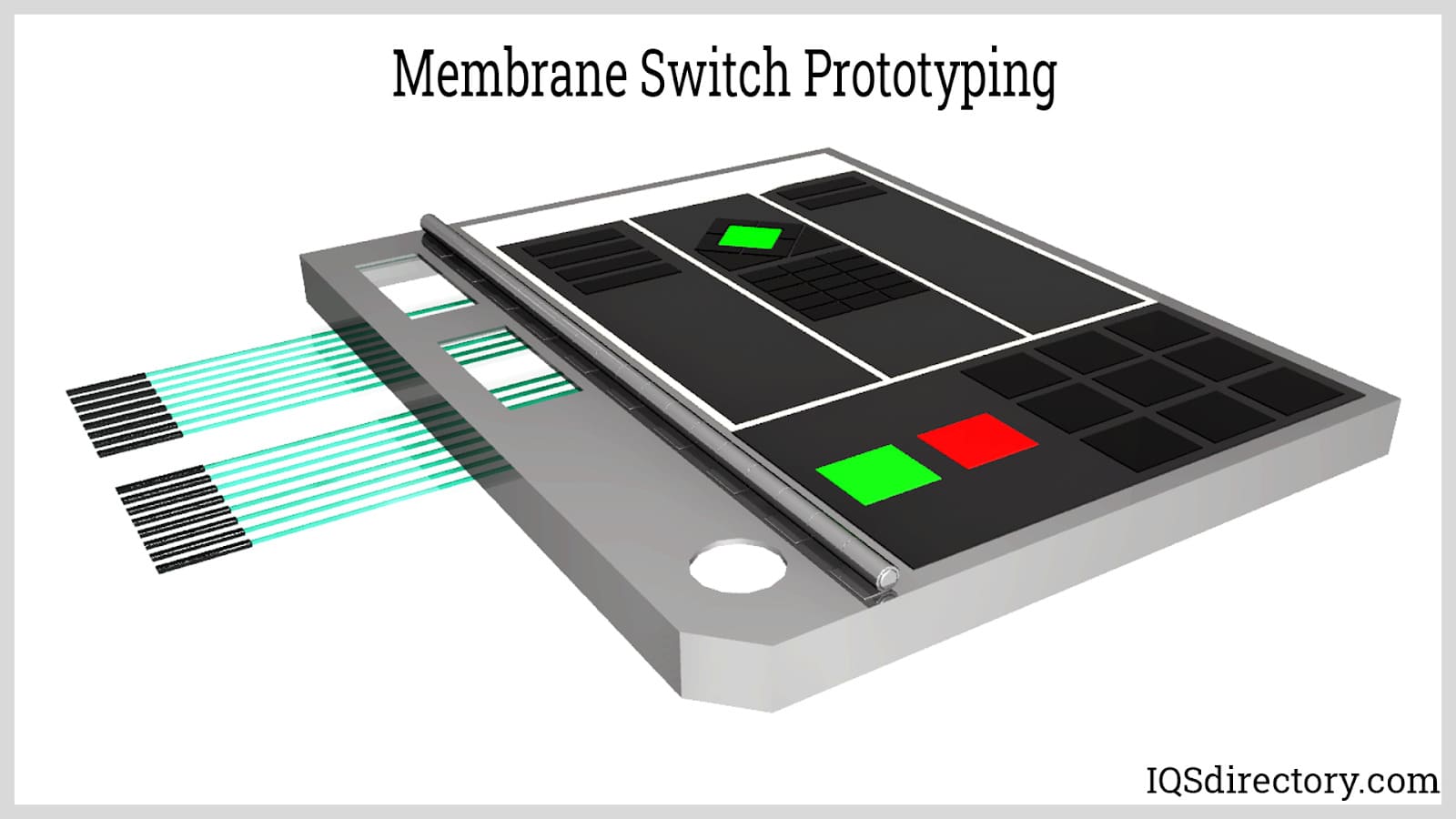The Environmental Benefits of Choosing Membrane Switches for Your Products
The Environmental Benefits of Choosing Membrane Switches for Your Products
Blog Article
Recognizing the Importance of Membrane Switches in Interface
Membrane switches are essential parts in the style of reliable user interfaces, helping with not just functionality yet likewise boosting aesthetic allure and individual communication. As we check out the numerous benefits and future patterns associated with Membrane innovation, it becomes clear that these buttons are a lot more than simply parts; they represent a convergence of innovation and practicality.
What Are Membrane Switches?

The spacer layer, which includes sticky properties, enables the splitting up of the circuit layer from the overlay, guaranteeing that the switch stays in a non-activated state up until pressed. When pressure is related to the overlay, it compresses the spacer layer, connecting the space and completing the circuit in the underlying layer. This style not just reduces the physical space required for traditional mechanical buttons but also enhances the resilience of the tool, as Membrane buttons are generally immune to dust, moisture, and various other environmental factors.
Typically found in applications varying from consumer electronics to clinical devices, Membrane buttons are indispensable to contemporary innovation, offering a effective and user-friendly user interface that straightens with modern layout needs.
Benefits of Membrane Buttons
While many button modern technologies exist, Membrane Switches offer unique advantages that make them especially desirable in different applications. Among the main advantages of Membrane buttons is their compact layout, which enables space-saving implementations in gadgets where realty is restricted. Their thin account not only boosts aesthetic charm but also helps with lightweight construction.
An additional considerable benefit is their resistance to ecological factors. Membrane buttons are generally secured versus wetness, dust, and impurities, making them excellent for usage sought after environments, such as medical tools and industrial equipment. This toughness expands the life-span of the button, decreasing upkeep prices and enhancing dependability.
In addition, Membrane buttons can be personalized to meet certain style demands, integrating distinct graphics and colors that enhance individual communication. Their tactile responses options can likewise be customized to supply a rewarding individual experience. Furthermore, Membrane buttons are cost-effective, specifically in high-volume applications, as they can be generated effectively.
Applications in Numerous Industries

In the consumer electronics market, Membrane switches are prevalent in devices such as microwaves, cleaning machines, and push-button controls. Their look these up tactile feedback and aesthetic options boost individual experience while giving a smooth, modern look. Additionally, automotive manufacturers use Membrane buttons in control panel controls and infotainment systems, where area is limited, and user involvement is important.
In addition, the industrial sector leverages Membrane buttons in control panels for equipment and equipment, enabling instinctive operation in typically rough environments. Their resistance to chemicals and wetness guarantees longevity and integrity in these applications. In general, the versatility of Membrane Switches contributes substantially to their widespread use, making them important in various technological domain names.
Style Factors To Consider for Membrane Switches

When making Membrane switches, several key factors to consider must be thought about to ensure optimal functionality and user experience. Firstly, the choice of products is vital; picking resilient, premium substratums can improve the switch's longevity and resistance to ecological variables such as moisture and temperature level fluctuations.
Second of all, the design of the graphic overlay must prioritize clearness and convenience of usage. Symbols and text have to be clear, and the format needs to help with instinctive communication (membrane switches). Furthermore, tactile feedback is important; including a responsive dome or various other devices can boost the individual experience by supplying physical confirmation of activation
An additional essential aspect is the switch's electrical efficiency. Designers have to make certain that the conductive traces are effectively created to minimize resistance and avoid signal interference. This includes assessing the called for actuation force and making sure compatibility with the digital components they will certainly user interface with.

Future Fads in Membrane Technology
As innovation continues to breakthrough, Membrane buttons are poised to evolve considerably, driven by go to the website developments in materials and making strategies. One emerging fad is the consolidation of sophisticated materials, such as conductive inks and flexible substratums, which improve longevity and decrease the total weight of Membrane switches. These products not only enhance the tactile reaction yet also enable the design of buttons that can stand up to harsher ecological conditions.
Furthermore, the assimilation of touch-sensitive innovations is transforming typical Membrane Switches into even more interactive user interfaces. Capacitive touch sensing units embedded within Membrane button panels can supply a much more responsive and intuitive user experience, straightening with the expanding need for streamlined, modern-day styles in consumer electronic devices.
Additionally, innovations in printing strategies, such as digital and 3D printing, enable rapid prototyping and customization of Membrane buttons. This flexibility permits manufacturers to react quicker to market demands and customer preferences.
Lastly, sustainability is becoming a significant emphasis, with suppliers exploring green products and processes. As these fads unfold, the future of Membrane technology assures enhanced performance, aesthetic appeal, and environmental duty, solidifying their duty in innovative customer interfaces across numerous industries.
Verdict
Finally, Membrane Switches stand for a vital element in Home Page the design of user interfaces, integrating performance with visual adaptability. Their benefits, consisting of sturdiness and resistance to environmental elements, make them appropriate for varied applications throughout numerous industries. Furthermore, thoughtful layout considerations boost user communication and experience. As developments in innovation continue, the advancement of Membrane switches is expected to further improve interface, driving advancement and enhancing use in an increasingly complicated technological landscape.
Membrane buttons are indispensable components in the layout of reliable user interfaces, helping with not only functionality however likewise enhancing visual allure and user communication.Membrane Switches serve as an important element in various user interfaces, facilitating a seamless interaction between customers and digital tools.While many switch innovations exist, Membrane Switches offer unique advantages that make them especially desirable in different applications.Additionally, Membrane buttons can be tailored to fulfill details layout needs, incorporating one-of-a-kind graphics and shades that improve user interaction.In conclusion, Membrane Switches represent an essential element in the style of customer interfaces, combining capability with visual adaptability.
Report this page